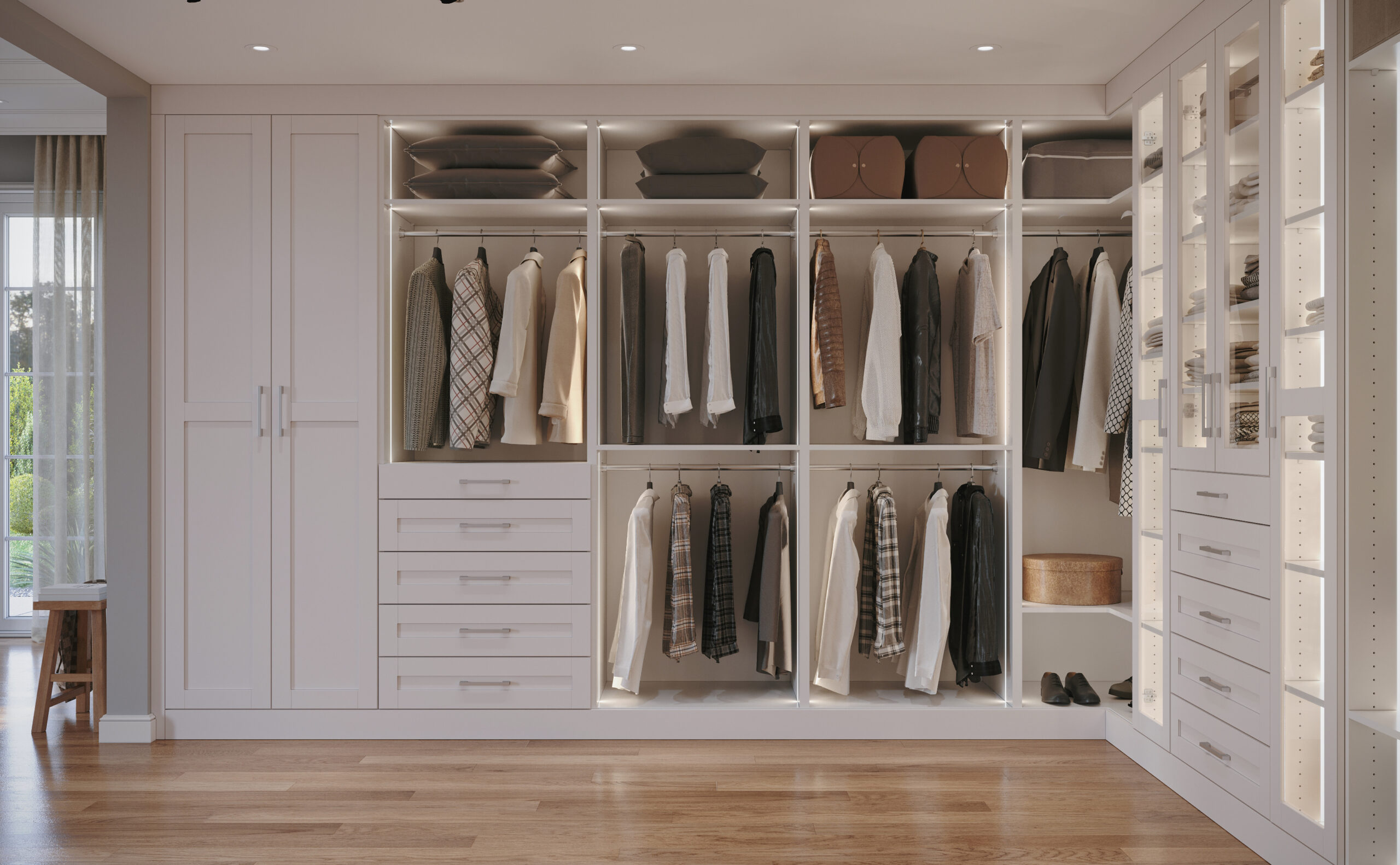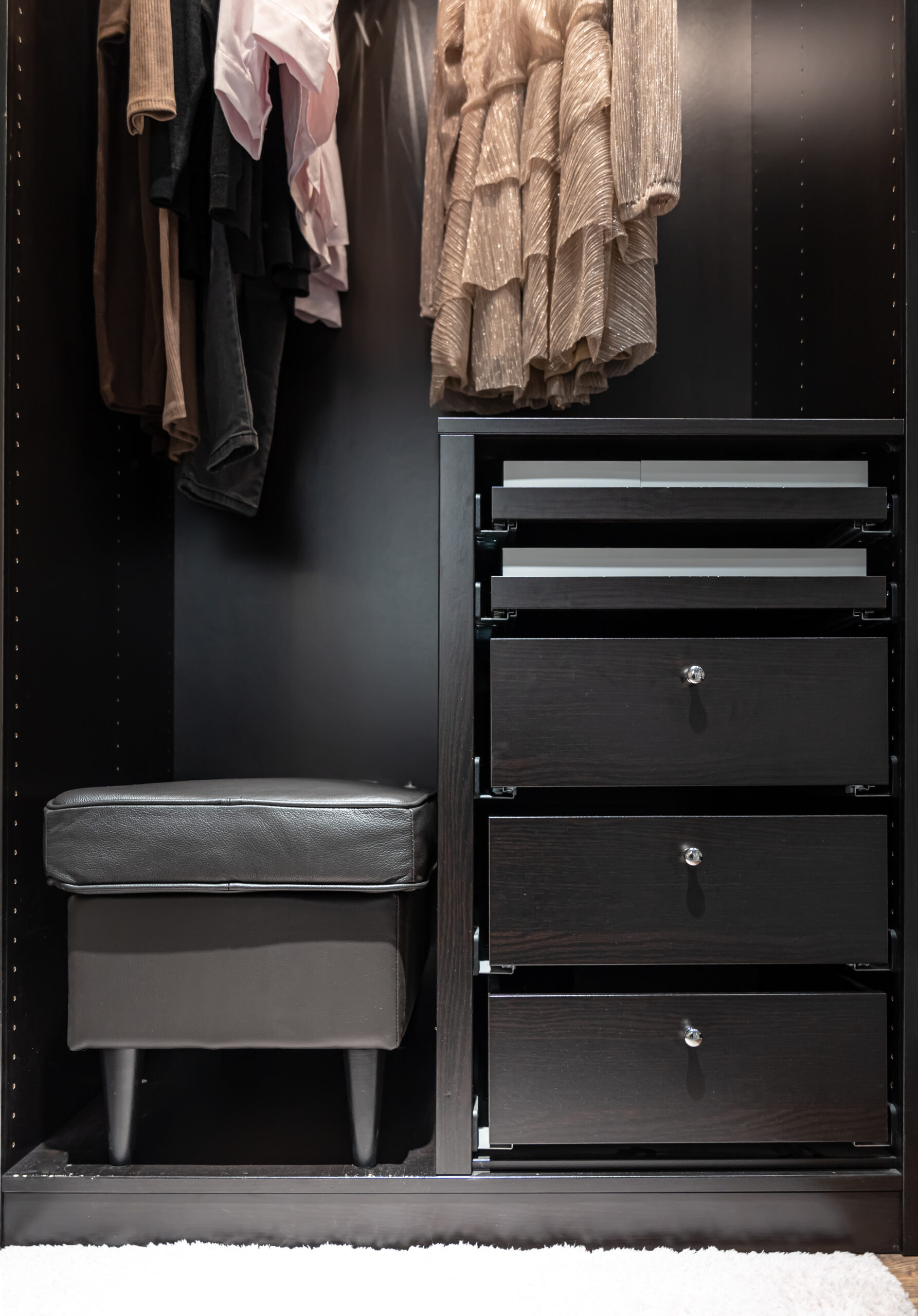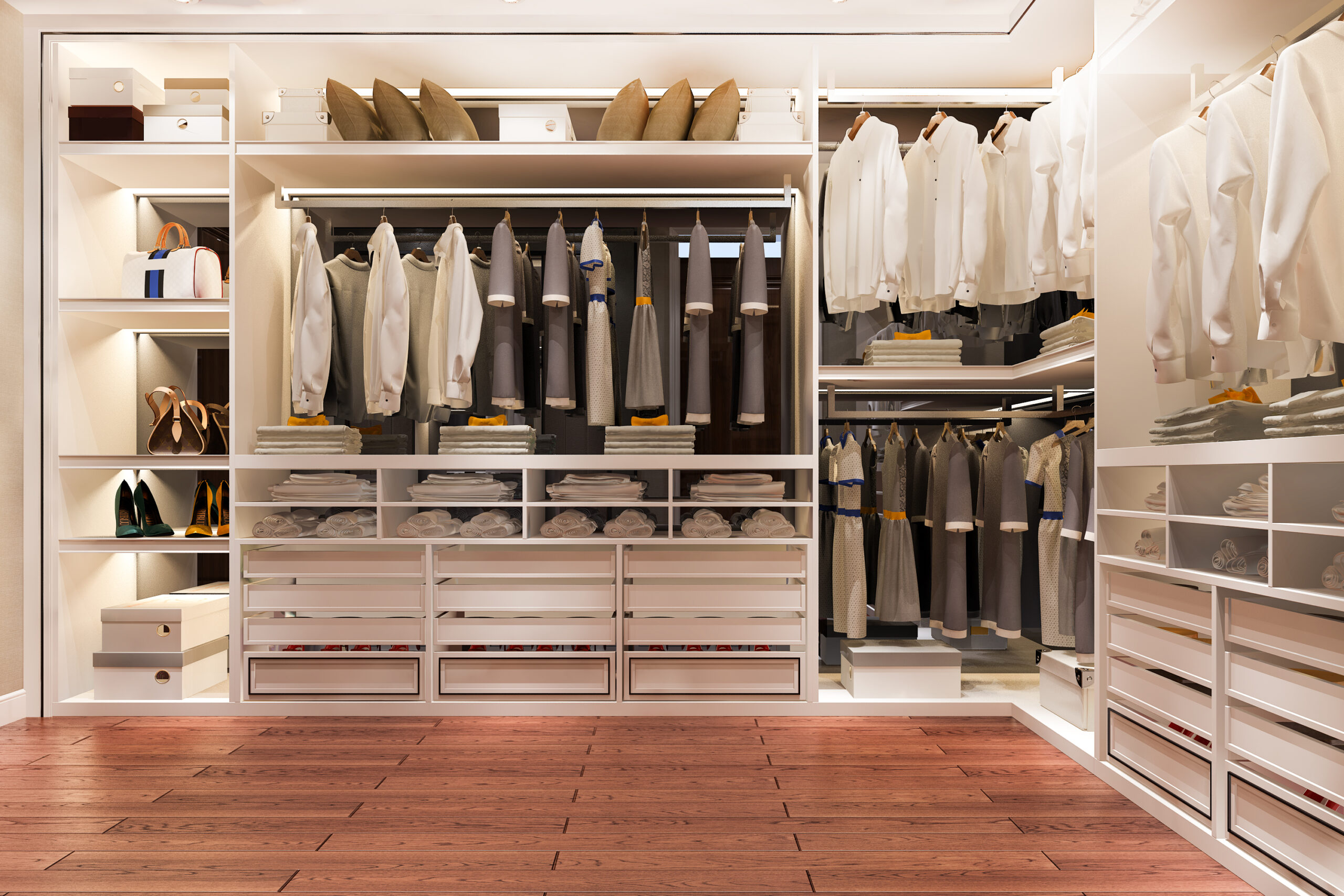DISCOUNTS ARE IN BLOOM! 30% OFF ALL CLOSETS!
Ciri Blog

Maximize Every Inch: The Benefits of Modular Closet Systems
In today’s world where living spaces are becoming increasingly compact and expensive, maximizing storage efficiency has never been more crucial. Whether you’re dealing with a tiny apartment closet, an awkwardly shaped walk-in space, or simply want to optimize your existing storage, modular closet systems offer a revolutionary solution that transforms chaos into organized bliss. These innovative storage solutions have gained tremendous popularity among homeowners, interior designers, and organization enthusiasts for their flexibility, functionality, and aesthetic appeal.
Understanding Modular Closet Systems
Modular closet systems represent a paradigm shift from traditional fixed closets to adaptable, customizable storage solutions. Unlike conventional built-in closets that come with predetermined shelves, rods, and compartments, modular systems consist of individual components that can be mixed, matched, and reconfigured according to your specific needs and space constraints.
These systems typically include various elements such as adjustable shelves, hanging rods at different heights, drawers, shoe racks, accessory organizers, and specialized compartments for different types of clothing and personal items. The beauty lies in their modularity – each piece serves a specific function while contributing to a cohesive, organized whole.
The concept originated from commercial retail environments where flexibility and efficiency were paramount. Retailers needed storage solutions that could adapt to changing inventory and seasonal requirements. This commercial success translated naturally into residential applications, where homeowners face similar challenges of varying storage needs and changing lifestyles.
Space Optimization: Making Every Square Inch Count
One of the most compelling advantages of modular closet systems is their exceptional ability to maximize space utilization. Traditional closets often waste significant vertical and horizontal space due to fixed shelving that doesn’t accommodate the varying heights of different items. Modular systems eliminate this inefficiency through intelligent design and customization.
Vertical space optimization is particularly impressive with modular systems. Instead of having one standard-height hanging rod, you can install multiple rods at different levels to accommodate various garment lengths. Short items like shirts and blouses can share vertical space with pants or skirts hung below, effectively doubling your hanging capacity. Additionally, adjustable shelves can be positioned at optimal heights for folded items, accessories, and storage boxes.
Corner spaces, often the most underutilized areas in traditional closets, become valuable real estate with modular systems. Specialized corner units, rotating carousels, and angled shelves transform these awkward spaces into accessible storage areas. Pull-out drawers and sliding organizers ensure that items stored in deeper areas remain easily reachable.
The psychological impact of maximized space cannot be understated. When every inch serves a purpose, closets feel larger and more manageable, reducing stress and making daily routines more pleasant. This efficiency often reveals that you have more space than you initially thought, potentially eliminating the need for additional storage furniture in your bedroom or dressing area.
Flexibility and Adaptability: Growing with Your Needs
Life is dynamic, and our storage needs evolve constantly. Career changes, seasonal clothing rotations, growing families, and shifting lifestyle preferences all impact our closet requirements. Modular closet systems excel in accommodating these changes without requiring complete overhauls or expensive renovations.
The adaptability factor is particularly valuable for growing families. A child’s closet needs will dramatically change from infancy through teenage years. Modular systems can easily transition from housing tiny onesies and diaper supplies to accommodating longer garments, sports equipment, and study materials. Parents can reconfigure the space as needed without purchasing entirely new storage solutions.
Seasonal adaptability is another significant advantage. Winter months might require more space for bulky coats and sweaters, while summer seasons call for organization of lighter fabrics and vacation gear. Modular components can be temporarily removed, repositioned, or supplemented with seasonal organizers to accommodate these cyclical changes.
Professional circumstances also influence storage needs. A work-from-home professional might need more space for casual clothing, while someone transitioning to a corporate environment might require additional hanging space for suits and formal wear. The modular approach allows for these adjustments without major investments or renovations.
Cost-Effectiveness: Smart Investment Strategy
While the initial perception might suggest that modular systems are expensive, they actually represent excellent long-term value when compared to traditional storage solutions or multiple organizational purchases over time. The cost-effectiveness becomes apparent through several factors.
First, modular systems eliminate the need for multiple separate organizational products. Instead of purchasing various standalone organizers, shoe racks, jewelry boxes, and storage containers over time, one modular system provides integrated solutions for all these needs. This consolidation often results in overall cost savings.
The longevity factor significantly impacts cost-effectiveness. High-quality modular systems are built to last, using durable materials and robust construction methods. Unlike cheaper organizational products that may need replacement every few years, well-designed modular systems can serve for decades, making the per-year cost extremely reasonable.
Flexibility reduces future costs by eliminating the need for complete replacements when storage needs change. Instead of discarding and replacing entire organizational systems, modular components can be reconfigured, supplemented, or partially replaced to meet new requirements. This adaptability protects your investment over time.
Additionally, modular systems can increase property value by demonstrating efficient space utilization and modern storage solutions. Potential buyers often view well-organized, maximized closet space as a significant selling point, particularly in markets where storage space is at a premium.
Enhanced Organization and Accessibility
Modular closet systems transform the daily experience of getting dressed and maintaining organized spaces. The systematic approach to organization reduces decision fatigue and streamlines morning routines, contributing to more efficient and stress-free daily life.
Visibility is dramatically improved with modular systems. Unlike traditional closets where items might be buried behind others or hidden in corners, modular designs prioritize accessibility and visibility. Clear sightlines to all stored items mean you can quickly locate what you need without disturbing other areas of the closet.
Categorization becomes intuitive with dedicated spaces for different types of items. Separate areas for work clothes, casual wear, accessories, and special occasion items create natural organization systems that are easy to maintain. This categorization extends to accessories, with specialized compartments for jewelry, belts, ties, and other small items that often become tangled or lost in traditional storage.
The accessibility factor is particularly important for individuals with mobility considerations. Modular systems can be configured to minimize reaching, bending, or stretching, with frequently used items positioned at optimal heights and depths. Pull-out drawers and sliding organizers bring items to you rather than requiring you to reach into deep spaces.
Aesthetic Appeal and Home Value
Modern modular closet systems have evolved far beyond purely functional storage solutions to become integral design elements that enhance the overall aesthetic of living spaces. The visual impact of a well-designed modular closet extends beyond the closet itself, influencing the perceived quality and style of the entire room.
Contemporary modular systems offer extensive customization options in terms of finishes, colors, and materials. Whether your style preference leans toward sleek modern minimalism, warm traditional wood tones, or bold contemporary statements, modular systems can be configured to complement and enhance your existing décor. This design flexibility ensures that storage solutions integrate seamlessly with your personal aesthetic rather than appearing as purely utilitarian additions.
The visual organization created by modular systems contributes to a sense of calm and control in personal spaces. When items have designated places and everything appears orderly and intentional, the psychological impact on daily life is significant. This organization extends to the visual appeal of stored items themselves – clothing and accessories displayed in an organized, visible manner often appear more valuable and well-maintained.
From a real estate perspective, professionally designed modular closet systems are increasingly viewed as premium features that can differentiate properties in competitive markets. Potential buyers often specifically look for evidence of thoughtful storage solutions, viewing them as indicators of overall home quality and attention to detail.
Installation and Maintenance Considerations
One of the most appealing aspects of modular closet systems is their accessibility to homeowners with varying levels of DIY experience. Many systems are designed for straightforward installation that doesn’t require extensive construction knowledge or specialized tools. This accessibility makes them particularly attractive compared to custom built-in solutions that require professional installation.
Most modular systems utilize tension-mounted or wall-anchored components that can be installed with basic tools and careful attention to manufacturer instructions. The modular nature means that installation can often be completed in phases, allowing homeowners to tackle the project gradually rather than requiring dedicated time for extensive renovation work.
Maintenance requirements for quality modular systems are typically minimal. Unlike painted or finished built-ins that might require periodic touch-ups or refinishing, most modular components are designed for durability and easy cleaning. Surfaces can usually be wiped down with standard cleaning products, and individual components can be removed for more thorough cleaning when necessary.
The ability to disassemble and relocate modular systems is particularly valuable for renters or homeowners who might move. Unlike permanent installations that represent sunk costs when relocating, modular systems can be carefully dismantled and reinstalled in new spaces, protecting the investment and providing continuity in organization systems.
Choosing the Right Modular System
Selecting the appropriate modular closet system requires careful consideration of several factors including space dimensions, storage needs, budget constraints, and aesthetic preferences. The decision-making process benefits from systematic evaluation rather than impulse purchases based solely on appearance or price.
Space assessment should include precise measurements of width, depth, and height, as well as identification of any architectural features that might impact installation such as sloped ceilings, electrical outlets, or HVAC vents. Understanding weight-bearing capacity of walls is crucial for systems that require wall mounting of heavier components.
Inventory assessment involves cataloging current storage needs and anticipating future requirements. Consider the types and quantities of clothing, accessories, shoes, and other items that need accommodation. Factor in seasonal variations and potential lifestyle changes that might impact storage needs.
Quality evaluation should focus on material durability, construction methods, warranty terms, and manufacturer reputation. While budget considerations are important, investing in higher-quality components often provides better long-term value through increased durability and enhanced functionality.
Future-Proofing Your Investment
The rapidly evolving landscape of home organization and storage technology means that modular closet systems should be evaluated not just for current needs but for future adaptability and expansion possibilities. Smart storage solutions are increasingly incorporating technology elements such as LED lighting, automated components, and integration with home automation systems.
Consider systems that offer expansion capabilities through compatible additional components. Manufacturers who continuously develop new modular elements provide opportunities to enhance and upgrade systems over time without requiring complete replacement. This evolutionary approach protects investments while allowing for incorporation of new organizational innovations.
Sustainability considerations are becoming increasingly important in purchasing decisions. Modular systems that utilize environmentally responsible materials, manufacturing processes, and packaging demonstrate commitment to environmental stewardship while often providing superior durability and performance.
Modular closet systems represent a sophisticated solution to the universal challenge of maximizing storage efficiency while maintaining organization and aesthetic appeal. Their combination of flexibility, functionality, and visual appeal makes them suitable for a wide range of living situations, from compact urban apartments to spacious suburban homes.
The investment in a quality modular closet system pays dividends through improved daily routines, enhanced space utilization, long-term adaptability, and potential property value increases. As living spaces continue to become more expensive and compact, the ability to maximize every available inch of storage space becomes increasingly valuable.
Whether you’re dealing with a cramped reach-in closet or a spacious walk-in area, modular systems offer the tools and flexibility needed to create organized, efficient, and beautiful storage solutions that adapt to your changing needs over time. The key lies in careful planning, quality component selection, and thoughtful configuration that reflects both current requirements and future possibilities.
Devon Lane

- Genel (16)
- Home Improvement (3)
- Reinvent Your Wardrobe with Modular Shelving Systems 08/26/2025
- Create Your Own Dressing Room: Walk-In Closet Ideas and Inspiration 08/18/2025
- Big Solutions for Small Spaces: Organized Living with Modular Closet Systems 08/10/2025
- 5 Easy Cabinet Assembly Tips for Hassle-Free Pi Closets Installation 08/02/2025
- 10 Genius Shoe Storage Solutions: Try a Shoe Cabinet with Drawers 07/25/2025






